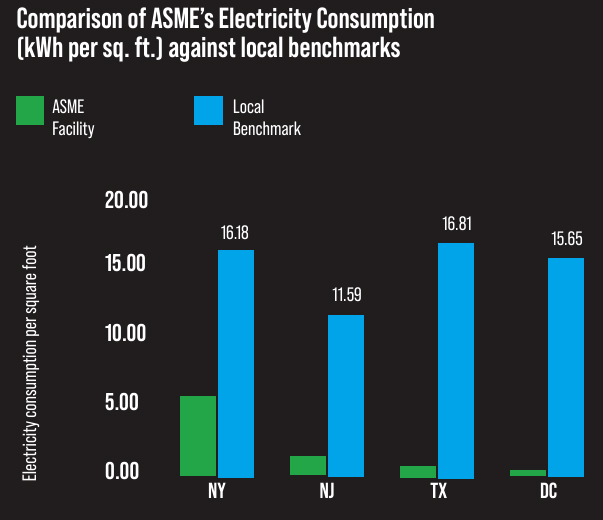Greenhouse Gas Emissions
ASME has played a leading global role in measurement and standard setting for more than 140 years. We also continuously use those same skills to improve ourselves for the good of humanity.
ASME's Emissions Reduction Journey
In pursuit of our position on climate action, ASME has committed to measuring, reporting, and reducing over time all scopes of our greenhouse gas (GHG) emissions.
We believe others will benefit from this window into our emissions-reduction journey and we are committed to shared learning from the solutions we deploy.


ASME’s purchased electricity, a Scope 2 emission, is significantly lower than tenants utilizing similar office spaces in the four U.S. markets where ASME has leased facilities and limited direct control of our emissions.*
*Local benchmark data was only available for US office locations
Spring 2024 |
Fall 2024 |
Winter 2024 |
2025+ |
|---|---|---|---|
|
|
|
|
What We’ve Accomplished
We have completed measurement of our Scope 1 and Scope 2 greenhouse gas emissions, which sets a benchmark for comparison to our peers and for measuring our future progress.
Scope 1 Emissions |
Scope 2 Emissions |
Scope 3 Emissions |
|---|---|---|
|
Direct emissions from owned or controlled sources, such as fuel combustion or the fugitive emissions of refrigerants.
|
Indirect emissions from the generation of purchased electricity, heating, and cooling consumed by the measuring entity.
|
Indirect emissions that occur in our value chain, including both upstream and downstream emissions. For ASME, this will include travel and all aspects of event production and logistics.
|

